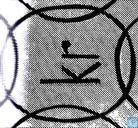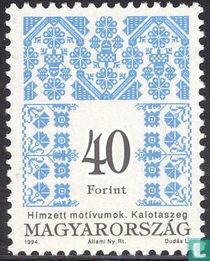Hongarije is een land in Centraal-Europa. In 1867 werd het keizerrijk Oostenrijk omgevormd tot het dubbelkoninkrijk Oostenrijk-Hongarije. De Oostenrijkse gebieden (Cisleithanië) en de Hongaarse gebieden (Transleithanië) werden aparte postgebieden, maar tot 1871 gebruikte Hongarije nog Oostenrijkse postzegels. In 1918, na de 1ste Wereldoorlog, viel het dubbelkoninkrijk Oostenrijk-Hongarije uiteen. Hongarije stond Transsylvanië af aan Roemenië, Slovakije verenigde zich met Tsjechië tot Tsjechoslowakije en Kroatië-Slavonië verenigde zich met Slovenië, Dalmatië en Bosnië-Herzegovina tot de Staat van Slovenen, Kroaten en Serviërs. Het resterende deel van Transleithanië werd de volksrepubliek Hongarije. In 1919 werd Hongarije korte tijd een sovjetrepubliek (radenrepubliek) en vervolgens kortweg een republiek. In 1920 werd Hongarije opnieuw een koninkrijk. Aan het eind van de Tweede Wereldoorlog, in 1944, werd Hongarije bezet door het Duitse Rijk en in 1945 werd het bevrijd door de Sovjet-Unie. In 1946 werd Hongarije officieel opnieuw een republiek. Van 1949 tot 1989 was Hongarije een volksrepubliek en daarna terug gewoon een republiek. Op 1 mei 2004 werd Hongarije als nieuwe lidstaat toegevoegd aan de Europese Unie. Bij deze gelegenheid werden de postzegels uitgegeven met Last-Dodo-nummers. #1654465, #5940659 en #3769851.
De watermerken van Hongarije:
In de loop der jaren zijn er voor het drukken van de postzegels papiersoorten gebruikt met verschillende watermerken. Een eerste opzet:
 Type 1: kr in ovaal (1881)
Type 1: kr in ovaal (1881)
- De k is 13 mm. lang.
- Gebruikt tussen 1881 en 1888.
Type 2: kr in ovaal (1888)
- De k is 15 mm. lang.
- Gebruikt tussen 1888 en 1898
De watermerken type 1 en type 2 zijn telkens gespreid over 4 zegels.
 Type 3: Stefanuskroon in een ovaal (1898)
Type 3: Stefanuskroon in een ovaal (1898)
- Volgens de één een ovaal, volgens de ander een cirkel
- Gebruikt tussen 1898 en 1899
Type 4: Stefanuskroon in een cirkel (1899)
- Het watermerk lijkt op type 3
- Op een vel komt 4x de combinatie IV/VI met een vierpuntige ster voor.
- De IV/VI en de ster zijn dus zeker niet bij elke postzegel zichtbaar.
- De kroon verschilt op detailpunten van het vorige type.
- Gebruikt tussen 1899 en 1904
 Type 5: Stefanuskroon (1904)
Type 5: Stefanuskroon (1904)
- Er zijn geen cirkels of ovalen meer.
- Aan de onderkant van de kroon zijn geen ringetjes.
- Gebruikt tussen 1904 en 1908
 Type 6: Stefanuskroon met ringen (1908)
Type 6: Stefanuskroon met ringen (1908)
- Er zijn geen cirkels of ovalen meer.
- Aan de onderkant van de kroon zijn ringetjes.
- Gebruikt tussen 1908 en 1909
 Type 7: Stefanuskroon met ringen (1909)
Type 7: Stefanuskroon met ringen (1909)
- Er zijn geen cirkels of ovalen meer.
- Aan de onderkant van de kroon zijn ringetjes.
- Er zijn kleine verschillen tussen deze kroon en de kroon van het vorige type:
- Het patriarchenkruis staat meer rechtop.
- De bovenkant is niet afgerond.
- De kroon oogt wat breder en minder hoog.
- De één na buitenste blokken van de onderste balk zijn iets smaller dan de buitenste blokken
- In het gedeelte daarboven zijn de verschillen in hoogte tussen de pieken en de boogjes groter.
- Gebruikt tussen 1909 en 1913.
 Type 8: Patriarchenkruis (meervoudig in elkaar) (1913)
Type 8: Patriarchenkruis (meervoudig in elkaar) (1913)
- Dit type kan zowel staand als liggend voorkomen.
- Gebruikt tussen 1913 en 1924.
 Type 9: Patriarchenkruis in stervorm (1923)
Type 9: Patriarchenkruis in stervorm (1923)
- Gebruikt tussen 1923 en 1931
 Type 10: Patriarchenkruis (meervoudig afzonderlijk) (1928)
Type 10: Patriarchenkruis (meervoudig afzonderlijk) (1928)
- Gebruikt tussen 1928 en 1947.
Type 11: Stefanuskroon boven wapenschild met patriarchenkruis (1941)
- Gebruikt tussen 1941 en 1947.
Type 12: Staatswapen en/of wapenschild (1947)
- Gebruikt tussen 1947 en 1950.
 Type 13: Ster meervoudig (1950)
Type 13: Ster meervoudig (1950)
- Het watermerk komt zowel liggend als staand voor.
- Gebruikt tussen 1950 en 1961.




























































